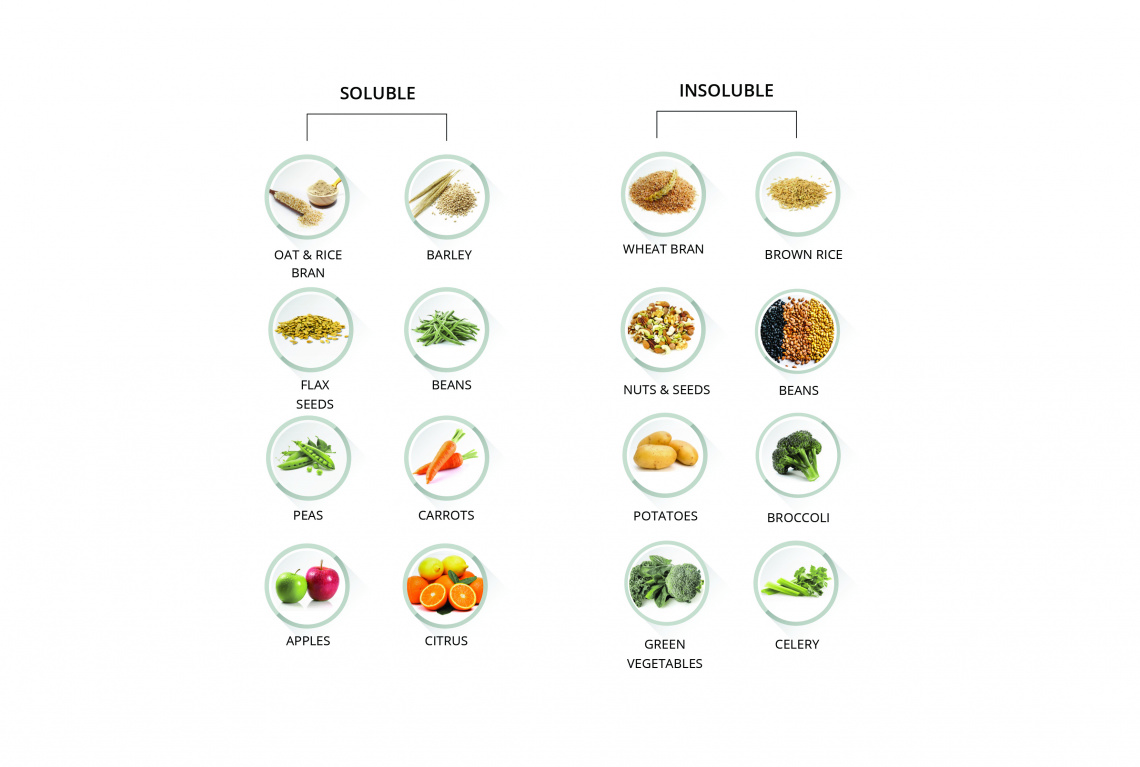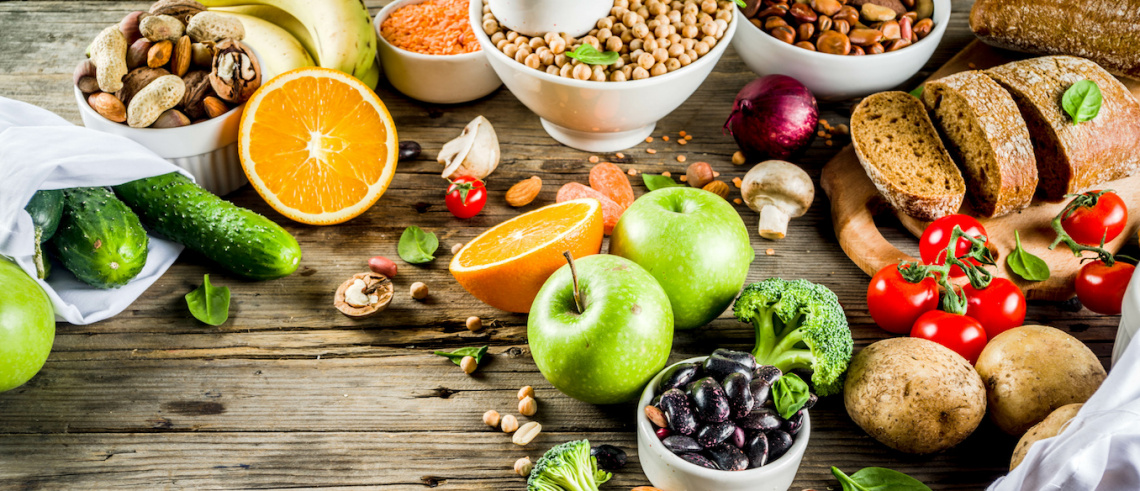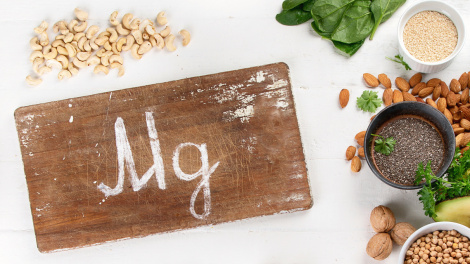We’ve all heard of a high-fiber diet. Do we know what it means? Of course we do – bunny food and bran flakes, right? Do we know why fiber is important? Sure, it keeps us regular. Honestly, we probably know all the basics, but the truth is that fiber is a lot less bland and boring than you might think. It’s also a lot more important.
What is fiber, really?
There are two types of fiber: soluble and insoluble. We’re mostly familiar with the latter.
Insoluble fiber is the fiber that promotes movement through the digestive system. It’s the fiber that helps you ‘go’, and is particularly helpful in cases of constipation and inconsistent stool. Soluble fiber is the kind that dissolves in water. It becomes a gel-like substance that then binds to cholesterol and sugar, slowing absorption into the bloodstream. This is why fiber really important for cardiovascular health, blood sugar and cholesterol regulation.
Fiber is best absorbed with water, so make sure you are drinking a good amount.
What are the benefits of a high-fiber diet?
There are lots of benefits to a high-fiber diet. As mentioned, soluble and insoluble fiber perform different tasks in the body, all of which contribute to our total immunity and digestive health, so it’s important to get a mix of both (1). In general fiber:
- Regulates bowel movements and helps maintain bowel health. It bulks up and softens your stools; scrubs out your bowel and eliminates toxins from your body. This is also effective in the prevention of haemorrhoids and, some studies suggest, lowering the risk of colorectal cancer. (2)
- Lowers cholesterol levels: soluble fiber may help lower LDL (or bad cholesterol levels) as (simply put) the fiber soaks up the cholesterol and removes it from your body before it can clog arteries.
- Helps control blood sugar levels: Slows the absorption of sugar and can help prevent the development of type 2 diabetes
- Reduces inflammation: the good bacteria that make up your microbiome (your gut microbiome is made up of trillions of bacteria, fungi and other microbes) feed off fiber. As they do this, they produce short chain fatty acids which have a huge number of benefits, including lowering inflammation which is a source of obesity and nearly every other chronic health problem.
- Weight loss and maintenance: fiber-rich foods fill you up faster and keep you satisfied longer. You can also It also help prevent your body from absorbing some of the calories in the food you eat.
- The Blue Zone diets purport that a diet high in fibre has a massive impact on your longevity. Fiber helps fight free radicals leading to lower risk of chronic disease.
What are the best sources of fiber?
Getting fiber from food is relatively easy. A healthy balance of fruit, veg and certain grains – the list goes on below – should provide you with enough fiber to keep your systems moving.
You’ll find your sources of fiber from the foods below:

Make this delicious lentil salad to add to your Meat-free Monday menu
How much is enough?
The average recommended amount of fiber daily for adults
- Men – 38g
- Women – 25g
However, after the big 5-0 this changes daily.
- Men ~ 30g daily
- Women ~ 21g.
Getting this amount of fiber is not as hard as it might seem. It’s just about managing your meals. You don’t have to go munching on bran flakes all day. In fact, you’ll probably eat too much. Consider veggies as snacks and keep the skins on as many fruits as possible. Salads aren’t only about the leaves, so spruce them up with nuts, legumes or some roasted root veg for some extra flavour.
Fiber is an essential part of gut health and your overall health in general. So make it a priority and be sure to eat the right amount for you!







Comments